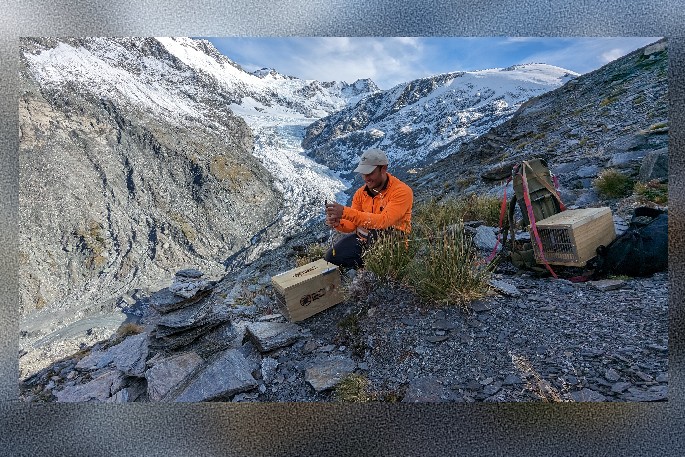This Content Is Only For Subscribers
In the Southern Lakes, a unique conservation consortium is quietly transforming the landscape—not just by protecting it, but by reshaping how the work is done.
Southern Lakes Sanctuary, a group of six major conservation groups, supports over 100 community initiatives across Queenstown Lakes. Chief executive officer, Paul Kavanagh, describes the initiative as “based on collaboration and partnerships,” with a mission grounded in efficiency, unity, and a shared passion for protecting Taiao—the environment.
“We signed our trust deed in mid-2021, so coming up four years now,” Paul says. “But the concept, the origins of it predate that, with the first discussions starting in 2017 around groups wanting to come together to increase efficiency, amplify the work, and really do what we can to improve the health of Taiao, of the environment.”
The launch was supported by AJ Hackett Bungy NZ (AJHBNZ), whose early belief in the project helped it off the ground.
“AJHBNZ were instrumental, integral to us actually getting started initially,” Paul says. “And I’m not sure if our project ever would have started without their support to really ramp up the mahi, but also just increasing the efficiency of our work. They’ve just been incredible; true partners since the start.”
Their support, Paul adds, has gone far beyond donations. “It feels like a true partnership and what I really like is that it could be a scalable model for how any business can help any not-for-profits with,” he says. “We lease office space and workshop space and they provide services for like HR and health and safety. And it’s things that we do pay for, but it’s much less than the market rate.”
That model is proving scalable, he believes, and one that other businesses of all sizes could replicate to support conservation.
While the Sanctuary is deeply connected in partnership, its results speak to an impressive operational scale. Since becoming operational the organisation and its partner groups have significantly expanded their footprint.
“So across our partner groups, we’ve doubled the size of the trap network,” Paul says. “And so there’s now, across our partner groups, over 13,000 traps, which is amazing. There’s nearly a thousand volunteers across our partner groups.”
Staff support is focused on enabling these groups, not replacing them. “Our staff are here to support those partner groups, train the volunteers, make it easier for them, and reducing the burden for those groups as well,” he says.
The ecological wins are substantial too. “We’ve helped to return takahē to the Rees Valley in February this year, and there’s now 51 takahē there,” Paul says. “That was a beautiful story about a partnership approach to conservation, so we could all work together, with Mana Whenua, with the Department of Conservation, with the landowners, and we’ve now got a species that was declared extinct for 50 years back in an area where it’s been absent for hundreds of years.”
He adds, “When we properly fund and support conservation projects, you can really accelerate the outcomes and the impact. And that’s what AJHBNZ have really been instrumental in.”
The Sanctuary’s collaborative model extends deep into the community, from iwi and landowners to volunteers and tourism operators. But the philosophy is clear: it’s not about replacing anyone—it’s about removing barriers and sharing the load.
“We’re not trying to replace the volunteer effort work. We still need the volunteers to go out and do their amazing mahi,” Paul says. “We’re just trying to reduce the burden on some of those groups, because the reporting requirements for groups can be quite onerous.”
“They just want to be in the hills, trapping for rats and counting mohua. So if we can do things like train the volunteers, help with recruitment, but also things like ordering baits and helicopters and doing health and safety reporting, it just means you reduce that volunteer fatigue as well.”
The result comes from collective action. “Making sure we’re involving community in our project is key” Paul says. “It’s us supporting the groups and doing the hard work as a collective. And I think that’s what’s been really powerful.”
That approach also creates value for the tourism sector. “We’re not here putting our hats out trying to get donations from groups,” he says. “We’re saying, we’re providing an important environmental service that will improve your product long term. We’re trying to build resilience at their product because again, we need to protect the environment where tourism is set.”
And the vision for the next five years? Paul says “A big thing in environmentalism, you have to be thinking long term. If not, you can lose your gains really, really quickly.”
To do that, stable partnerships are key. “You cannot think long term if you’re bouncing from one-year funding to one-year funds,” he says. “So we need to be able to think and plan long term. Funding has to also include operational support costs.”
“And we need paid staff. For each paid staff member we can get, we can mobilize an army of volunteers.”
New technology will also play a crucial role. “That’s where we’re getting some huge gains in the conservation space,” Paul says. “There is a lot of exciting new tech that we’re trying to incorporate into our project. It doesn’t replace the need for hard work and boots on the ground, community, and partnerships with groups like AJ Hackett Bungy.”



